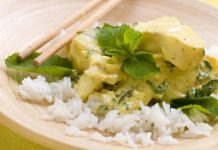New York (AP) – A fourth U.S. person has been diagnosed with bacteria resistant to a last resort antibiotic, but researchers are expressing relief that so far these superbug precursors have not spread to others.

The latest case is a 2-year-old Connecticut girl who was diagnosed earlier this year, the Centers for Disease Control and Prevention reported Friday.
She and three other Americans have been found to have E. coli bacteria that were resistant to an important medicine called colistin. Colistin is an old, powerful drug with significant side effects that is reserved for germs that already resist other important antibiotics.
Health officials have worried that the colistin-resistant bacteria will spread their special trait to bacteria already resistant to other medicines, setting the stage for true superbug infections that are impervious to all known antibiotics.
For example, researchers reported last week a worrisome case of a 76-year-old man treated in 2014 at a New Jersey hospital. In follow-up testing this year, he was found to have been infected by a germ that was resistant to both colistin and another class of antibiotics called carbapenems that are also reserved to treat especially tough bugs.
It was the first time this kind of double-resistance was reported in the U.S., though several other cases have been reported elsewhere in the world.
All the U.S. cases have been treatable by other antibiotics.
And, importantly, researchers report that the bacteria do not seem to have infected other people. When bacteria spread, they encounter other bacteria and can exchange genetic traits, creating more opportunity for a superbug to emerge.
The Connecticut girl developed diarrhea during a June trip to the Caribbean. It turns out another bug caused her symptoms, one that she probably picked up from something she ate. But lab testing revealed she also was carrying E. coli that carried colistin resistance, said Maroya Walters, a CDC epidemiologist who investigated the case.
She recovered, Walters said. Six family members were tested and none tested positive for bacteria carrying the colistin-resistance gene, called mcr-1 by scientists.
The CDC on Friday also updated an investigation into one of the four other colistin-resistant cases, a Pennsylvania woman whose case was first reported in May.
Investigators were not able to determine where she picked up her infection, but they tested more than 100 people but found no evidence it had spread to anyone else.
Based on what researchers have seen so far, “we’re hopeful that the risk of transmission to otherwise healthy people is relatively low,” said Dr. Alexander Kallen, a CDC epidemiologist who worked on the case.
Online:
CDC reports: http://www.cdc.gov/mmwr




